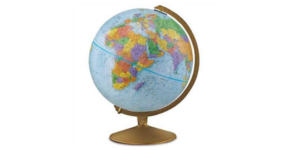The first discussions around the FIRE movement date back from 1992, when Vicki Robin and Joe Dominguez published the book Your Money or Your Life in 1992
Even though I have always had life goals related to financial independence, I only came across the FIRE (Financial Independence and Retire Early) movement early this year.
Our friends from Investopedia tell us that “Financial Independence, Retire Early (FIRE) is a movement of people devoted to a program of extreme savings and investment that aims to allow them to retire far earlier than traditional budgets and retirement plans would permit”.
The movement has been growing amongst millennials, who had enough of their jobs and are looking for a better quality of life. I really liked the concept and sympathized with it. The idea is to save as much as you can and get your savings to “work” for you.
Understanding the FIRE concept
Taking the risk of oversimplifying the concept, the FIRE movement basically advocates that you should save circa 25 times of your annual expenses (also known as the 4% rule – from the Todd R. Tresidder book) and create a portfolio that can generate a passive income for you.
In practice, something like this:
FIRE Savings = Annual cost of living x 25 years
i.e. If you spend $50,000.00 per year ($4,167 per month), you would need$1,250,000.00 to maintain your lifestyle.
Your financial independence will be funded by your FIRE Savings, which should be invested in a portfolio that generates an annual return of at least “4% per year + inflation” (this article further explains inflation).
Your cost of living should include all your expenses, such as:

- Household – rent or mortgage, utilities, internet, house maintenance, and other related expenses.
- Health Care and Insurances – health insurance, home/car insurances, health expenses, etc.
- Transportation costs – public transport, petrol, vehicle maintenance, and others.
- Personal Care and Leisure – Clothing, leisure activities, books that you buy, travels, et. al.
- Others, such as tax.
There have been many recent articles revisiting the FIRE movement and the 4% rule. Some of them say that the 4% rule is outdated and should be reviewed as a consequence of the current economic scenario around the world (low-interest rates)
My personal view on FIRE
I will be honest with you; I don’t have an excel spreadsheet that breaks down all my living costs and I don’t think it is a sustainable way of living – counting every cent that you spend is dull and not fair with you.
I am of the opinion that instead of wasting your time trying to figure out all your living costs, you should focus more on how you can earn more money (first #exit1095law).
However, I strongly advise you to have an idea of what are your monthly expenses – for example, my current cost of living in general is around $4,000-$5,000 per month (and there is room for optimizing and decreasing it).
With these numbers, and considering the 25 times multiplier, my FIRE number would be:
FIRE Savings = Annual cost of living x 25 years
FIRE Savings = ($5,000 x 12) x 25 years = $1,500,000.00
My (semi) FIRE strategy
I am not too close to this $1.5M figure, but I divided my “(semi) FIRE strategy” in couple of priorities/steps:
- Priority 1 – (Short-term) – Earn More Money with my engineering skills – Yeah, unfortunately, I still need to work for a couple of years to make more money and have financial peace. However, I am considering starting my own consulting business with the experience I already have, which might increase my income.
- Priority 2 – (Medium-Term) – Online Business – This is my main focus at the moment, and I’ve been studying hard and dedicating a considerate amount of time to make this happen.
- Priority 3 – (Medium-Term) – Use the benefits of Geographical Arbitrage – What if you could earn in dollar and spend in Indonesian Rupiah? Brazilian Real? Or live in Eastern European Countries with low cost of living? Cost of living in some of these countries are significantly below Australian costs (I am based in Sydney – Australia!). This site gives you an idea cost of living in different cities around the world (if you want to know more about geographical arbitrage, see this post).

Yeah, I know – I tend to be very planned and methodical, and create a program for everything that I do (see my post about this).
I am planning to do a smooth transition out of corporate life (even though if I could, I would resign tomorrow!). But for the time being, this way makes me feel more comfortable.
Also, I don’t want to stop working and retire. I just want to work on different subjects and things that I am passionate about (I am falling in love with blogging, for example).
I know that there are some people that are more spontaneous and quit their jobs straight away without a structured plan – I really admire these bold and courageous movements – the internet is full of success stories and great articles!
As for me, I realized that things need to be planned and matured in my mind. I need to have a plan and a certain framework to act and that is what I am doing at the moment.
My Conclusion on the FIRE Movement

In a nutshell, I think the FIRE concept is awesome. It is great to have a defined financial target – when you have clear numbers, the goal setting and monitoring processes become much easier.
I don’t think that I will be able to reach the $1,500,000.00 within the next 3 years. But I also don’t think it will be required. I am more focused on the FI (Financial Independence) rather than RE (Retirement Early).
This means that I will probably leave the corporate world as soon as I find a way to start make money online in sustainable way, regardless of how much I have saved!
What about you? What are your thoughts on FIRE?





